
Costa Rica has become a popular surf destination, and for good reason. The country has consistent, year-round surf, the water temperature averages in the low 80s, and there’s an ever-present relaxed vibe that helps melt away visitors’ stress.
From world-class breaks to beginner-friendly rollers and everything in between, Costa Rica offers waves for all levels of surfers. Whether you’re looking for a private surf retreat, a luxury beachfront villa, or a boutique hotel close to your favorite lineup, Costa Rica has lots of options to suit your style.
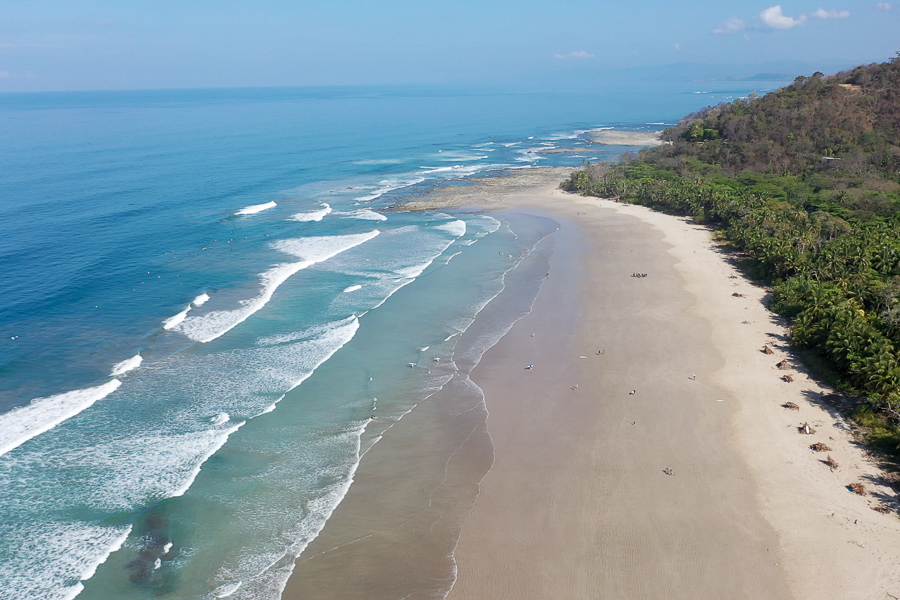
Because of Costa Rica’s reputation for being the most stable and safest country in Central America, there has been a surge in tourism and development over the past 20 years. The upside of this is that the country is quite safe and easy to travel in, and there are lots of high-quality restaurants and accommodations available.
The slight downside is that there are more travelers than ever. Fortunately, many smaller Costa Rica surf towns are growing in a respectful and sustainable way, and there are definitely still opportunities to get off the beaten path if you go exploring. As with any destination, you just have to know where to go. A little bit of research will reveal the areas and waves that best match your style and what you’re looking for.
When you’re planning any surf trip, there’s a lot to consider—your level of surfing, travel logistics, the time of year you’re most likely to score waves, and the type of experience you’re looking for.
In this Guide to Surfing Costa Rica, we’ll break down when and where to go, transportation, where to stay, surf trip costs, and everything else you need to know to make your trip a raging success. Vamos!
Want to Have the Best Surf Trip to Costa Rica?
We specialize in custom luxury surf trips to Costa Rica, tailored to your surf level and preferences. Enjoy an expertly planned surf vacation with insider surf intel, the best local surf coaches, stunning villas, private chefs, and more. Learn more.
Surfing Costa Rica

Costa Rica is home to a wide range of incredible breaks. Witch’s Rock and Ollie’s Point in the northern region are two of the most famous because of the film Endless Summer II, and are the kind of waves that surfers spend a lifetime dreaming about.
Pavones in the far south region is another world-class wave that rivals Chicama in Peru as one of the world’s longest lefts. It can take around 10 hours to drive from the Tamarindo area to Pavones, so if you’re only staying in the country for a short time, you might not want to spend an entire day driving in both directions.
You’ll find the most consistent year-round surf in the northern region, between Tamarindo and Santa Teresa. It’s fairly easy to get around this area, depending on the weather and road conditions, so you can explore a lot of different breaks. This area loves a south swell, and some of the biggest swells tend to arrive between April and October.

The greater Tamarindo area is also a good hub for arranging boat trips to places like Witch’s Rock, which is farther north and best accessed by boat. Playa Langosta is only 10 minutes south of Tamarindo, while Playa Grande is about 25 minutes north (right across the estuary). Playa Avellanas is about 25 minutes south, and Playa Negra another 15 minutes past there. Nosara is around two hours south, and Mal País and Playa Santa Teresa are a 3.5-hour drive south down the Nicoya Peninsula.
The northern region is one of your best bets when visiting Costa Rica for the first time, as there are waves to excite and entertain any level of surfer. You’ll find multiple world-class beach breaks offering rights and lefts, rocky reef/point breaks, and plenty of awesome, lesser-known breaks that you’ll learn about once you’re there. For more detailed info on the various surf regions and seasons, check out this regional overview of the surf in Costa Rica and our lowdown on the Best Costa Rica Surf Towns.
The Playa Avellanas and Playa Negra area is a special wave-rich stretch of bumpy dirt roads that is less developed, although it is peppered with boutique hotels and quality eateries. Join us for our 7-night all-inclusive surf and yoga retreat at an oceanfront villa in Playa Negra, where you can surf, explore, make new friends, and relax at one of our favorite surf hubs in Costa Rica.
The Surf in Costa Rica / A Guide to the Regions, Seasons, and Breaks >>
Types of Surf Spots
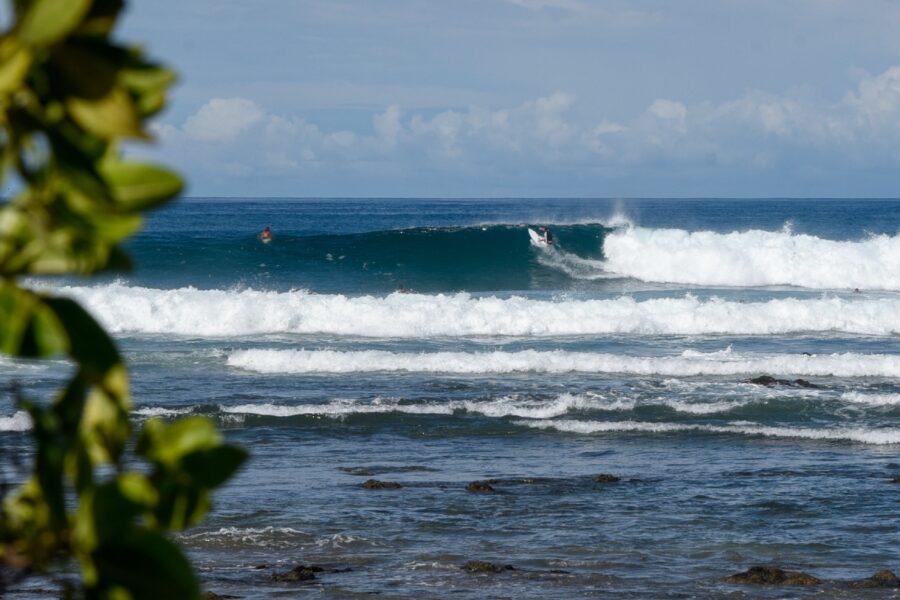
Costa Rica is a diverse surf destination with a number of different types of breaks. Most of the spots are small to moderate beach breaks, ranging from soft and user-friendly to hollow. There are also long cobblestone point breaks and reefs, providing something for just about everyone (as long as you aren’t looking for XXL waves, which don’t really exist in Costa Rica).
Level of Difficulty
This is an area with a little bit of something for everyone, from total beginners to expert shredders. That being said, Costa Rica is generally a user-friendly surf destination, with most of the breaks being appropriate for beginners and intermediates. In addition, the swell only rarely gets bigger than head-high or slightly overhead.
Crowds
The surf in Costa Rica is pretty crowded, due to a healthy local surf population, lots of expat residents, and the fact that it is the most popular tourist destination in Central America. Expect breaks in popular surf zones to be pretty packed, particularly in late morning and midday. That being said, if you are willing to drive and explore–or wake up early for the dawn patrol–you can still manage to score a solo session now and then.
Water Temperature
One of the best things about surfing in Costa Rica is that the water stays warm year round. Expect to surf in board shorts or bikinis–although a good rash guard can help prevent sunburn.
Getting to the Surf
Most surf zones are well developed and have accommodation options right in front of the best-known waves. Depending where you stay and what waves you are hoping to surf, it may only be a short walk from your house to the surf. That being said, renting a car opens up the country and makes it possible to access a lot more spots quite easily–and that can mean escaping the crowds for some solo sessions.
Top Surf Spots in Costa Rica
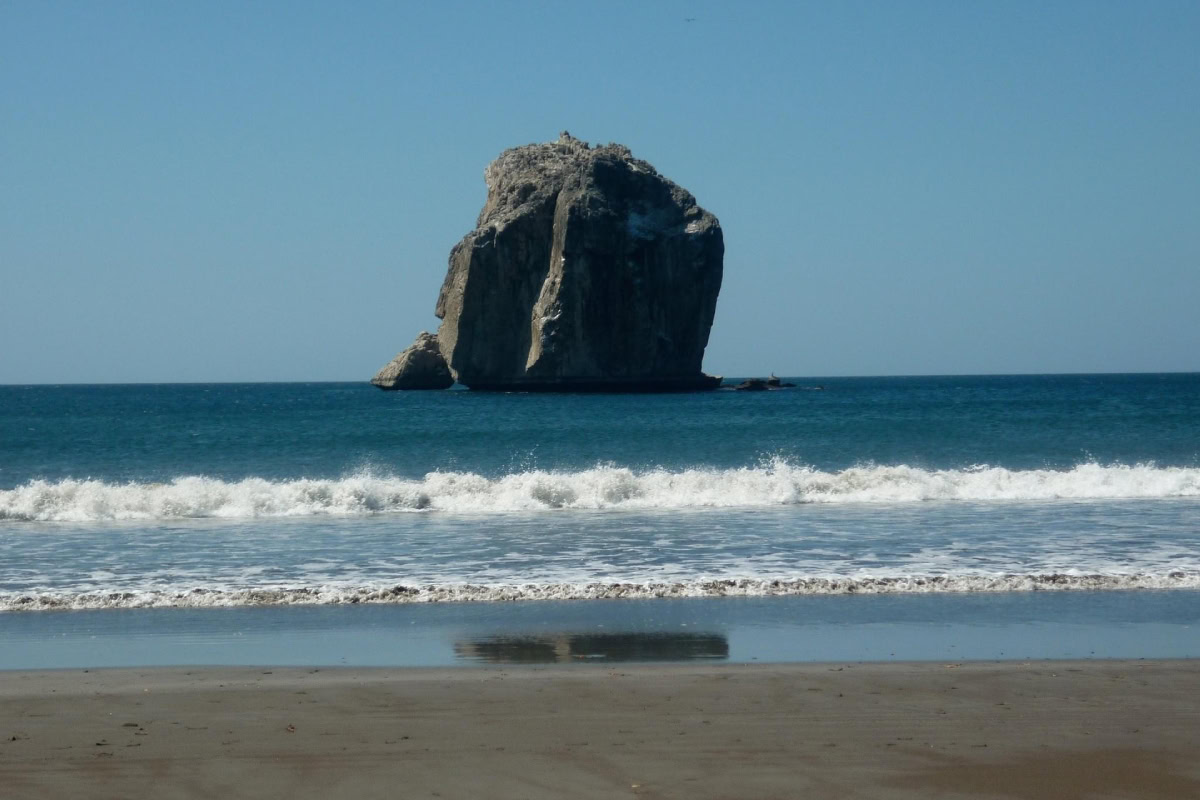
Witch’s Rock
Located in Santa Rosa National Park and accessible by boat, Witch’s Rock is one of Costa Rica’s best setups–a rippable, powerful set of peaks that offer up solid sections just begging to be smashed and the occasional coverup. There isn’t a resident local crowd here, so the numbers in the water tend to stay relatively low. That being said, most people making the boat ride in are serious surfers looking to score waves, so the vibe is a bit more competitive than at many of the more crowded but less talented lineups throughout the country.
Tamarindo
The Tamarindo area has a number of surf spots and is pretty consistent, making it one of the go-to zones on the Guanacaste Peninsula. Although there is a mix of beginner, intermediate, and advanced waves, the best setup in the area is Tamarindo River Mouth, which can serve up long, fun right-hand barrels on a northwest swell.
Pavones
One of the longest and most perfect left-hand point breaks on the planet, Pavones was once a closely guarded secret rife with localism and violence. Today, it is on every goofy foot visitor’s must-surf list–and for good reason. Peeling symmetrically over a cobblestone point, Pavones is the stuff of dreams–perfect for longboarding at waist-high, and eternally rippable when it’s a bit bigger. An intermediate break with a healthy crowd that can typically surf pretty well, Pavones is relatively secluded (a long drive from the main surf zones) and requires a solid south swell to wrap into the point.
Playa Hermosa
One of the country’s hollower and more powerful waves, Playa Hermosa in Jaco is arguably the best beach break in Costa Rica–at least for advanced surfers. Located close to San Jose and offering up some of the best barrels in the area, it tends to be pretty crowded and localized. That, combined with the power of the wave, means this isn’t really a beginner spot. For those looking to get tubed, however, it’s one of the best (and most consistent) options on the coast.
Ollie’s Point
A beautiful, secluded (boat access), symmetrical right-hand point that was made famous in The Endless Summer II, Ollie’s Point requires a large SW swell to break (and rarely gets bigger than head high), but it’s about as perfect and user-friendly as a point break gets. Referred to by some as Costa Rica’s answer to Rincon, it is relatively empty (due to difficulty of access) and endless fun–as long as you are lucky enough to score a swell that actually breaks.
Salsa Brava
One of Costa Rica’s rare Caribbean waves, Salsa Brava is a powerful reef peak that was immortalized in the book “In Search of Captain Zero.” The closest thing Costa Rica has to a slab, this is an advanced wave for experienced surfers only, despite the fact that it typically breaks on short-period wind swell. Due to the fact that it is a reef break with a small, clearly defined takeoff zone, it can get overwhelmed when crowded. That being said, Salsa Brava offers up proper tubes, which is somewhat of a rarity in a country that mostly caters to beginner and intermediate surfers.
Surf Charters in Costa Rica
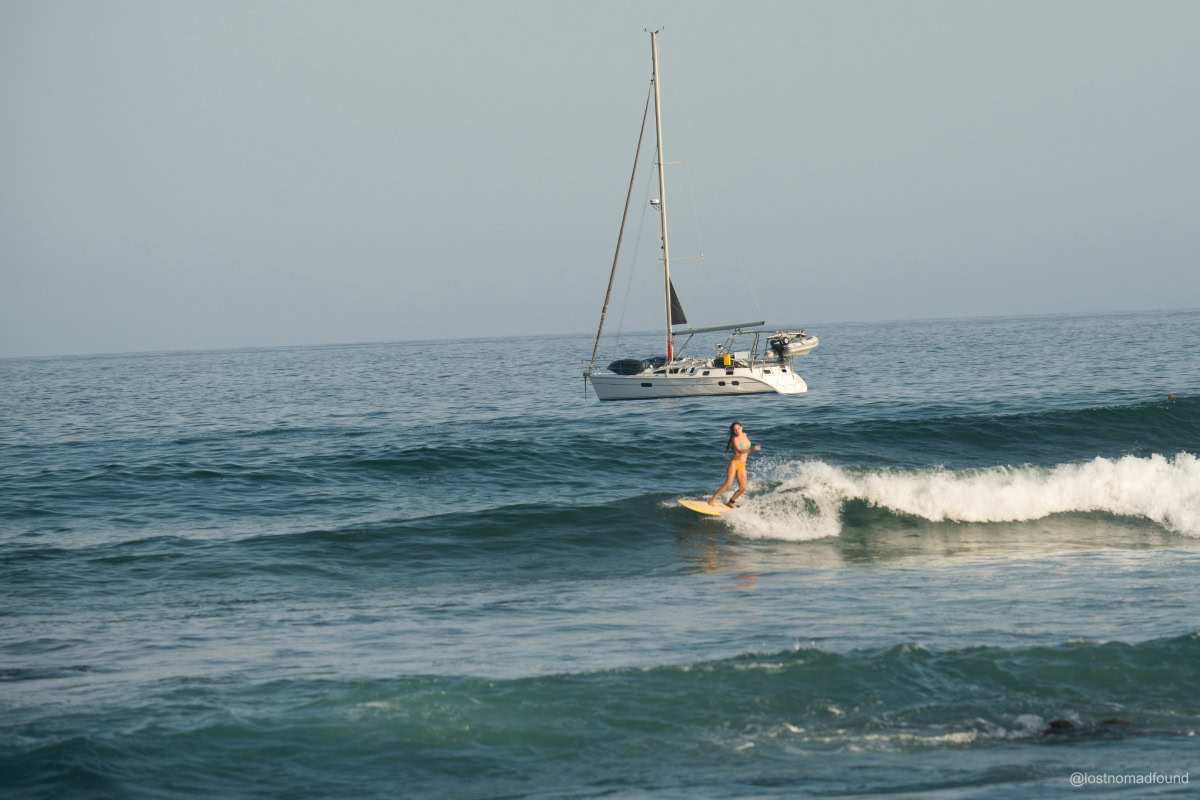
For more intermediate to advanced surfers, there are a few surf charter options that can get you to legendary spots like Witch’s Rock and Ollie’s Point. Private charters offer the most comfortable and convenient experience, often including hotel pick-ups, refreshments, and expert guides who know the best conditions and times to surf these iconic breaks.
While surf charters in Costa Rica can be pricier than those in destinations like Indonesia, they’re well worth it for the adventure of surfing world-famous, remote waves with minimal crowds.
Where To Stay
Over the past two decades, Costa Rica has seen significant growth and has become an increasingly popular travel destination. This surge in popularity has led to a wide array of beautiful and unique accommodations—but it’s worth noting that the best places tend to book up quickly.
If you’re traveling with a group or family, renting a private villa is a great option. There are some really fantastic places to stay, and you can enjoy the combination of luxury and privacy.
It’s important to bear in mind that certain times of the year can book up very early, especially the Christmas and New Year holidays. If you plan to travel during this time, we highly recommend booking as early as possible to have the most options and availability.
Below is a sampling of the many stunning properties we have available for your surf vacation in Costa Rica. We hand-pick properties based on design, amenities, and proximity to surf breaks.
Want to experience the best of Costa Rica without the hassle of planning? We specialize in unforgettable Costa Rica surf trips, available in two ways:
- Tailor-Made Luxury Surf Trips are tailored to your surf level and preferences. Enjoy a 5-star surf vacation with insider surf intel, the best local surf coaches, stunning oceanfront villas, talented private chefs, surf photography, and more.
- Ready-to-Book Costa Rica Surf Trips are premium, ready-to-book experiences designed to give you the best surf trip—effortlessly. Whether you’re going solo, with your partner, a group of friends, or the whole family, this all-in-one package includes everything you need for a next-level surf getaway.
Want to Plan the Ultimate Surf Trip to Costa Rica?
We create unforgettable surf trips to Costa Rica, crafted with local know-how and surf expertise. Go custom with our Tailor-Made Surf Trips designed around your style and crew, or jump right in with one of our expertly curated Ready-to-Book Surf Trips.
Travel Basics in Costa Rica
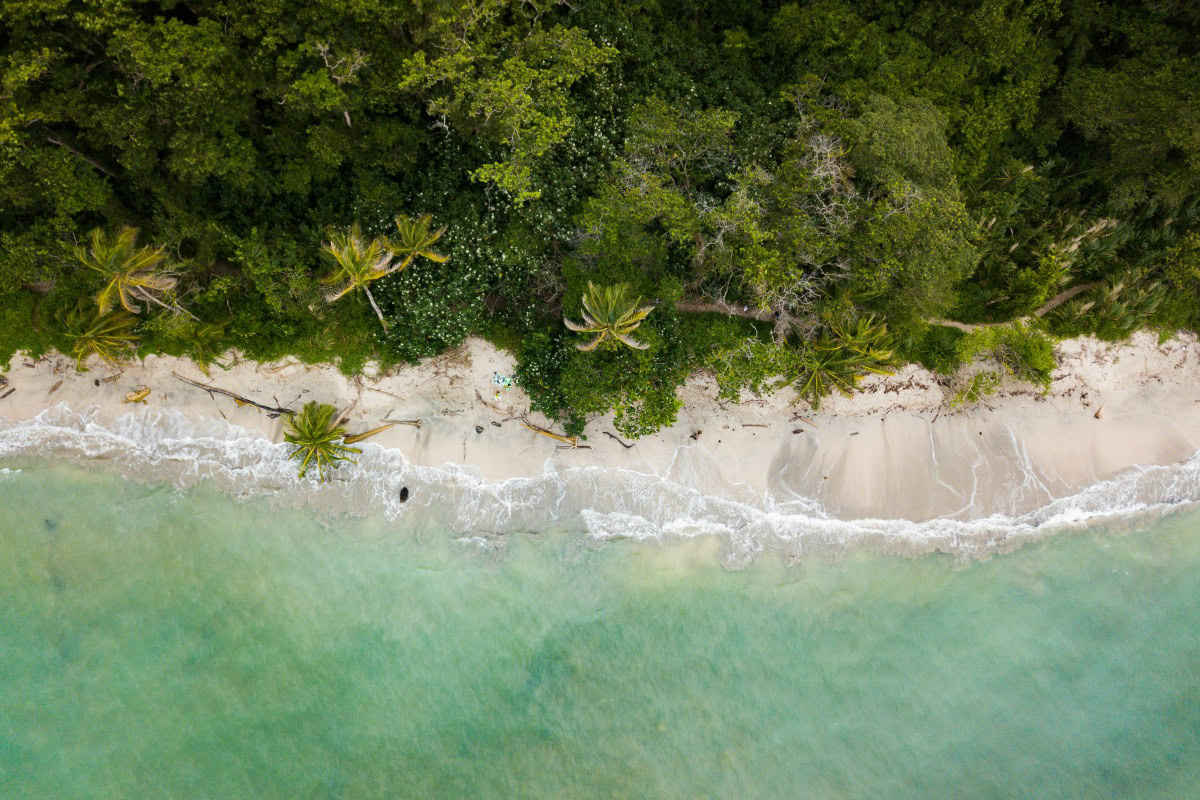
Seasons & Weather
Costa Rica enjoys a tropical climate characterized by warm temperatures and distinct wet and dry seasons. The dry season, from November to April, offers ample sunshine and balmy temperatures, making it an ideal time for beach activities and outdoor adventures
The wet season, from May to October, brings refreshing rains that rejuvenate the lush landscapes, creating vibrant greenery and flourishing wildlife. While occasional showers are common during this time, they typically occur in the late afternoon or evening, leaving plenty of opportunities to explore during the day. With year-round warm temperatures, Costa Rica offers an inviting escape for travelers seeking a slice of paradise in any season.
Currency
The official currency of Costa Rica is the Costa Rican colón (CRC); the plural is colónes. While the exchange rate may vary, as of the latest update, 1 USD equals approximately 610 CRC, and 1 EUR equals approximately 690 CRC.

Costa Rica surf trips
made easy.
Explore luxury done-for-you surf vacations with Lush Palm Private Retreats.
Staying Connected
Wi-Fi is available at most hotels, restaurants, and cafes throughout Costa Rica, especially in popular tourist areas. That said, the connection can vary depending on location. If you plan on using mobile service during your trip, we highly recommend looking into your cell service provider and adding a package for international service for the length of your stay to avoid any unexpected/unpleasant mobile phone charges.
Language
Spanish is the official language of Costa Rica, but English is widely spoken, especially in well-developed and well-traveled areas. Visitors will find that most locals can communicate effectively in English. That said, it’s always great to learn a few words in Spanish.
Local Insights
- There is a delicious ice-cream sandwich made in Costa Rica called “trits” (pronounced treats). They are scrumptious, and we highly recommend trying one. You can find trits at most grocery stores.
- Many restaurants and services accept credit cards and US dollars. It’s a good idea to have some cash on hand for tipping or in case you need it for small shops, but if you’re traveling from the US, there’s no need to exchange for colónes (the local currency) before your trip, as the majority of places accept US dollars.
- Many businesses and people in Costa Rica communicate through WhatsApp. If you don’t have the WhatsApp app on your phone, we recommend downloading it and setting up your profile before your trip. It’s easy, fast, and free.
- If you plan on using mobile service during your trip, we highly recommend looking into your cell service provider and adding a package for international service for the length of your stay to avoid any unexpected/unpleasant mobile phone charges.
- “Pura Vida” is more than just a phrase in Costa Rica; it’s a way of life, a philosophy deeply ingrained in the culture and mindset of the people. Translating to “pure life” or “simple life,” Pura Vida encapsulates the idea of living life to the fullest, appreciating the beauty of simplicity, and finding joy in every moment.
Travel Seasons in Costa Rica

Like most destinations, Costa Rica has distinct travel seasons, and the difference in pricing and crowds between them can be pretty significant. The high season runs from mid-November through April, with peak travel periods around Christmas, New Year’s, and Easter. The low season—affectionately known in the tourism world as the “green season”—spans from May to mid-November.
Low Season (aka Rainy Season): May to Mid-November
As the name suggests, the low season is the rainiest time of year in Costa Rica, often referred to locally as “winter.” That said, it’s not all soggy shoes and gray skies—many surfers actually prefer this time of year for its powerful Pacific swells and epic wave conditions.
Other perks? Fewer travelers, lush green landscapes, and significantly lower prices on accommodations. In many regions, rainfall tends to come in brief afternoon or evening showers, leaving much of the day free for exploring. But keep in mind: in more remote areas, heavy rain can make roads impassable due to flooding or river crossings, especially in September and October, which are typically the wettest months.
Shoulder Season: May to July & November
The shoulder season is a sweet spot for travel—offering a nice balance between decent weather, fewer crowds, and better deals on lodging. While it’s technically part of the rainy season, early summer rains are usually light and predictable, often limited to the late afternoon or evening.
After the long dry season, a little rain can actually be a welcome refresher, cooling things down and settling the dust. It’s also when the landscapes are at their most vibrant and green.
High Season (aka Dry Season): Mid-November to April
Costa Rica’s high season is when the weather is at its sunniest and driest, making it the most popular time to visit. With that popularity comes higher prices, bigger crowds, and a need to plan ahead—especially if you’re traveling around the holidays. Many hotels and vacation rentals have minimum stay requirements (typically five to ten nights) during peak times.
Christmas, New Year’s, and Easter are the busiest times of year, with Easter Week (Semana Santa) being the biggest holiday in Costa Rica. Expect beaches and popular destinations to be bustling, as many locals take time off to vacation with family.
Eat & Drink
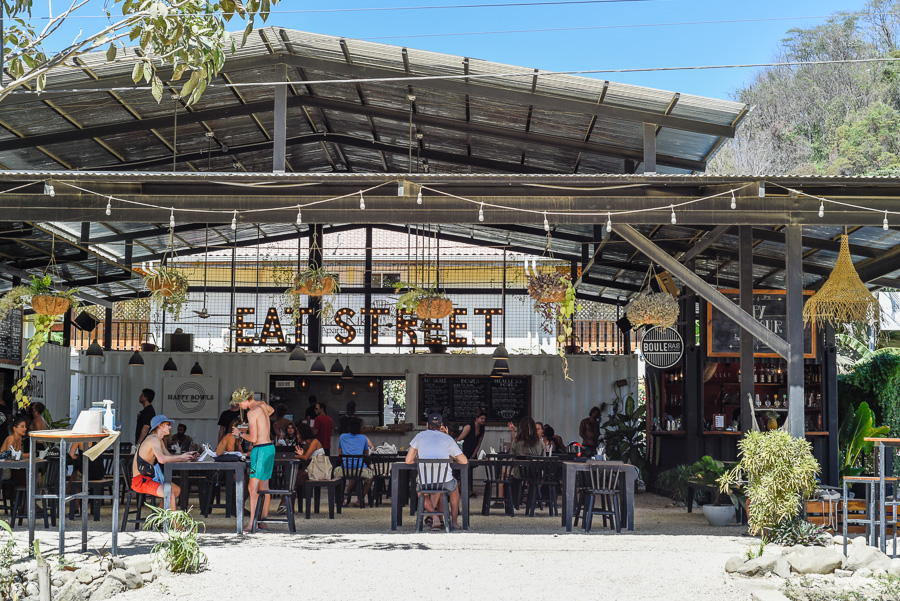
Costa Rica has a wide selection of excellent restaurants. There are tasty local dishes, and the influx of expats in Costa Rica has also brought a wide variety of cuisines to most coastal towns. Expect a range of delicious options, from Italian and Middle Eastern to vegan and amazing sushi. For all you foodies out there: You won’t be disappointed.
Transportation
As one of the most traveler-friendly places in Central America, Costa Rica has many transportation options on offer. Private drivers, rental cars, and domestic flights make it easy to get around, whether you’re headed to a bustling surf town or a secluded beach break. The best way to travel depends on how many locations you plan to visit and how much freedom you want to explore different surf spots at your own pace.
International Airports in Costa Rica
Costa Rica has two international airports: Juan Santamaria Airport in the capital of San Jose (SJO), and Daniel Oduber Quirós Airport, also known as Liberia International Airport (LIR), in the Guanacaste region.
If you’re heading to the northwest coast (or anywhere north), or if you’re thinking of hopping over to Nicaragua, you’ll want to fly into Liberia Airport. If you’re headed anywhere on the central coast, south, or Caribbean side, you’ll want to fly into Juan Santamaria Airport in San Jose.
Getting Around

Car Rentals
If you want to have total flexibility to go where you please, renting a car is the best option. The main roads in Costa Rica are paved and well taken care of, making driving between towns fairly straightforward. That being said, if you wander off the beaten track, you’re bound to encounter plenty of unpaved and badly maintained roads. In the rainy season, you should definitely get a 4-wheel-drive vehicle (as roads can get very muddy). But even if it isn’t the rainy season, a 4×4 will come in handy and give you more flexibility.
ATV Rentals
ATVs aren’t an option for getting you to and from the airport, but they’re a fun way to zip around and explore once you are at your destination. You can find daily, weekly, and monthly rentals in many beach towns.
Private Transfers
If you’re traveling in a group or looking for a hassle-free option, private transfers are a great choice. They can often be more cost-effective than multiple taxis, especially for longer trips, and having a professional driver means you can sit back, relax, and enjoy the scenery without worrying about navigating unfamiliar roads. Plus, many private transfer services offer spacious, comfortable vehicles—perfect for storing surfboards and gear.
Domestic Flights
Traveling by car is a great way to see the country, but if you’re short on time or just want to get to the breaks faster, there are multiple options for commercial charter flights from the international airports to smaller local airstrips. The main airlines for domestic flights are Sansa and Costa Rica Green Airways.
*A note about getting around: There are some destinations with very similar or the exact same names in Costa Rica, so always double-check that you’re headed to the right place. For example, there are at least three beaches named “Playa Hermosa.”
While it’s awesome that everyone wants to name their local spot beautiful beach (because every beach is so beautiful!), you don’t want to show up at the one that’s five hours away from the Playa Hermosa where your hotel is.
Also, it’s important to remember that locals in Costa Rica are very friendly, so if you get lost, don’t despair! Just ask a friendly Tico and you’ll be right on your way.
Things To Do in Costa Rica
(besides surfing)

Wildlife Watching
Costa Rica is one of the most biodiverse countries on Earth. Keep an eye out for monkeys, sloths, toucans, iguanas, coatis, and more while walking through nature reserves or on guided wildlife tours. Birdwatching is especially popular, with hundreds of native and migratory species to observe.
ATV Tours
Hop on an ATV and explore off-the-beaten-path trails, mountain ridges, river crossings, and remote beaches. These tours offer a fun way to get deep into nature and experience Costa Rica’s wild side.
Hiking
With national parks, cloud forests, waterfalls, and volcanoes throughout the country, hiking is one of the best ways to explore Costa Rica. Trails range from mellow jungle walks to challenging volcanic climbs—there’s something for every level.
Ziplining
Fly through the treetops and enjoy a bird’s-eye view of lush rainforests and jungle canopies. Costa Rica is home to some of the world’s most scenic and well-designed zipline courses—an absolute must for thrill-seekers.
Waterfall Adventures
Cool off in one of Costa Rica’s many waterfalls. Whether you’re swimming, hiking to a hidden cascade, or simply relaxing nearby, waterfall visits are a favorite way to connect with nature.
Stand-Up Paddleboarding (SUP) and Kayaking
Explore rivers, estuaries, and coastal waters by SUP or kayak. It’s a peaceful way to enjoy Costa Rica’s wildlife and scenery, especially during sunrise or sunset paddles.
Snorkeling and Scuba Diving
Costa Rica’s Pacific and Caribbean coasts offer excellent snorkeling and diving, with opportunities to see tropical fish, sea turtles, manta rays, and even whale sharks.
Boat Tours and Sunset Cruises
Relax on a catamaran or other boat tour—often including snorkeling, paddleboarding, and dolphin sightings—then cap it off with a stunning Pacific sunset and drinks on deck.
Horseback Riding
Take a scenic ride through forest trails, farmland, or along the beach. Horseback tours are a great way to slow down and take in the diverse landscapes.
Fishing Trips
Costa Rica is a world-renowned sportfishing destination. Spend a day on the water and try your luck catching sailfish, mahi-mahi, tuna, or marlin.
Visit Wildlife Sanctuaries
Learn more about Costa Rica’s incredible wildlife by visiting animal rescue centers and sanctuaries, where you can see rescued monkeys, sloths, wildcats, and other native species up close.
Turtle Nesting Tours
Depending on the season, you might spot sea turtles nesting or hatching along Costa Rica’s beaches—a rare and moving experience guided by local experts.
FAQs
Is Costa Rica safe? Generally speaking, Costa Rica is one of the safest countries to visit in Latin America. It is politically stable and caters to tons of tourists, so the government prioritizes security and works to keep crime down. That being said, it is always a good idea to keep valuables out of sight and to avoid partying in sketchy-looking areas late at night, especially if you are alone.
Is Costa Rica a family-friendly destination? Definitely! Considering the country has a wide range of surf spots for all levels, as well as lots of amazing attractions that appeal to all ages, it is an excellent destination for a family trip.
What’s the best time of year to surf in Costa Rica? The best time to visit really depends on what type of waves you are looking to score, your surf level, and if you are open to traveling in the rainy season (for a chance at bigger swell). That being said, Costa Rica tends to receive more and larger south swells between May and October.
Are there options for beginner surfers in Costa Rica? Definitely! Costa Rica has tons of small, user-friendly waves breaking over sand that are perfect for beginners. Although there are some intermediate and advanced waves in the country (most of which tend to be pretty well-known), Costa Rica is generally a user-friendly surf destination.
Where should I stay in Costa Rica for surfing? There are a lot of great surf hubs in the country, all of which have different advantages, and it also depends on the experience you’re looking for. Our favorite surf towns are Nosara, Playa Avellanas, Playa Negra, and Playa Santa Teresa. Check out this lowdown on the Best Costa Rica Surf Towns.
Travel Insurance
While we’d rather not think about getting injured while traveling, there are too many cases of people who didn’t think about insurance and get nailed with crazy medical bills after the matter.
You know the deal—better safe than sorry. Battleface or World Nomads Insurance offer very comprehensive travel insurance and cover lots of activities, including surfing and ocean sports. You can easily check them out and get a fast quote below.
Get a battleface Insurance Quote >>
Get a World Nomads Insurance Quote >>
Long story short, Costa Rica is one of the best places to surf, and you’ll have an awesome time no matter when you go. The country is developed enough to be easy and have great options, but still undeveloped enough to find yourself alone on a five-mile stretch of beach if you go exploring.
And if you encounter days when the surf isn’t cooperating, you can always explore the beautiful Costa Rica beaches, hike to waterfalls, ride ATVs, go fishing, and enjoy the many other activities on offer.

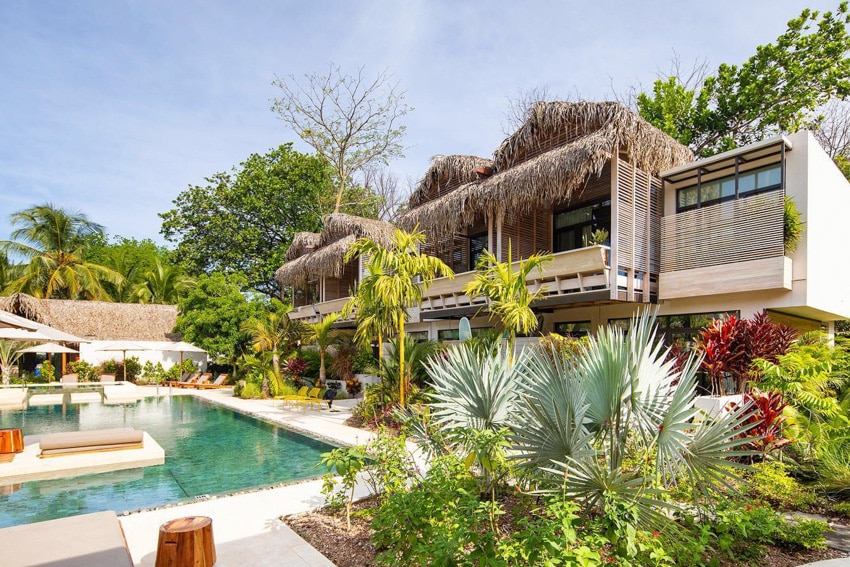

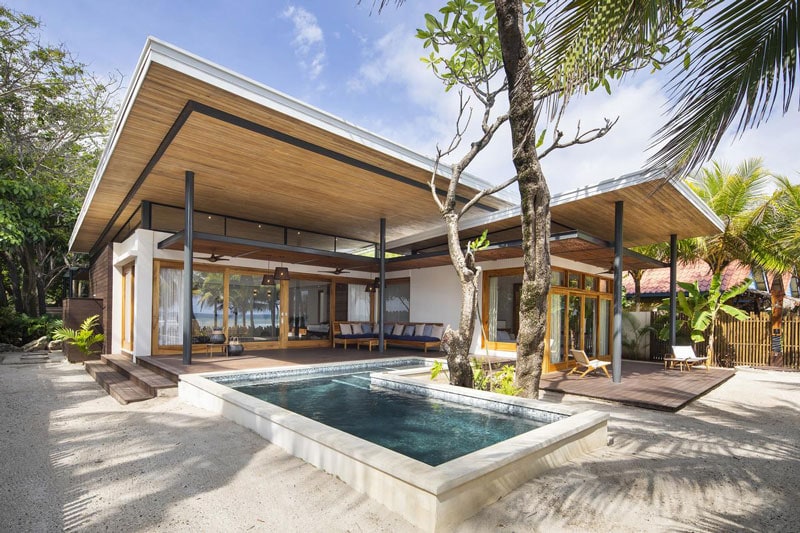
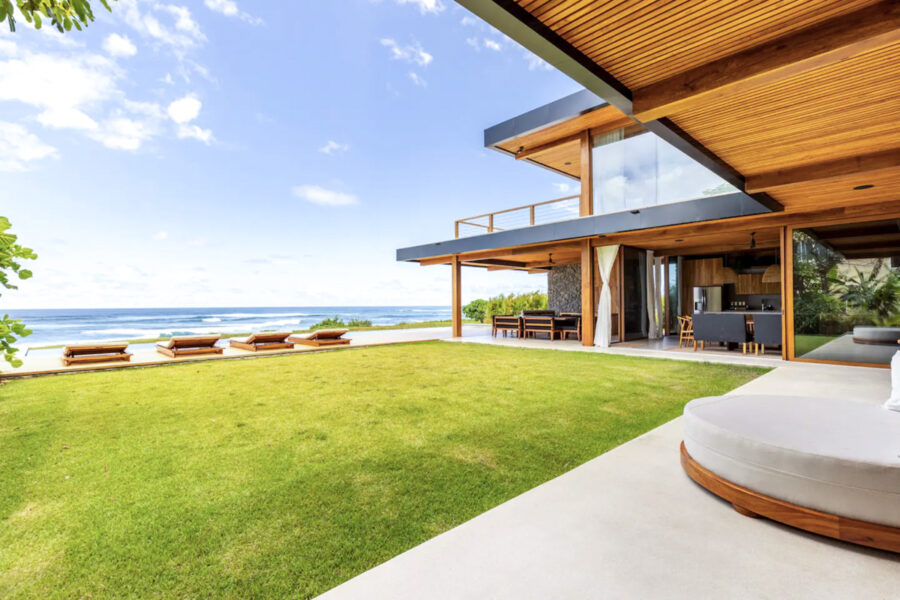

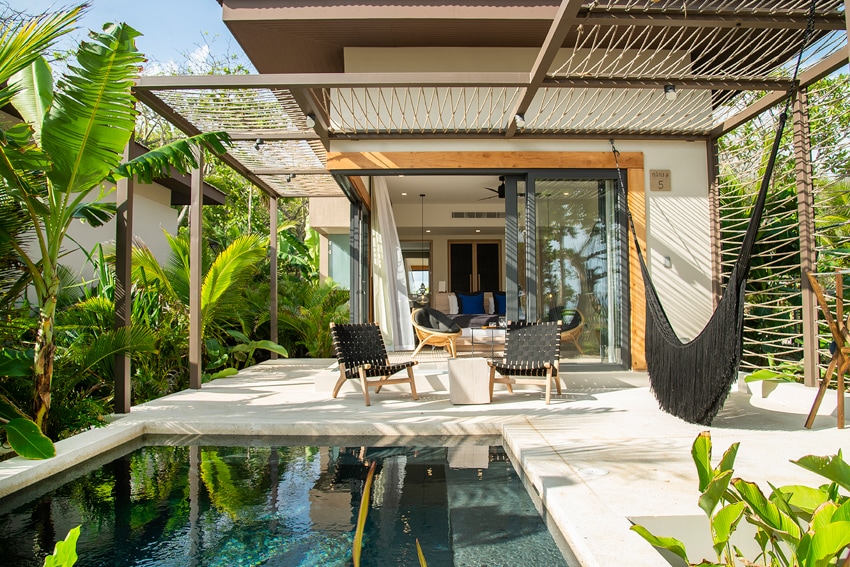





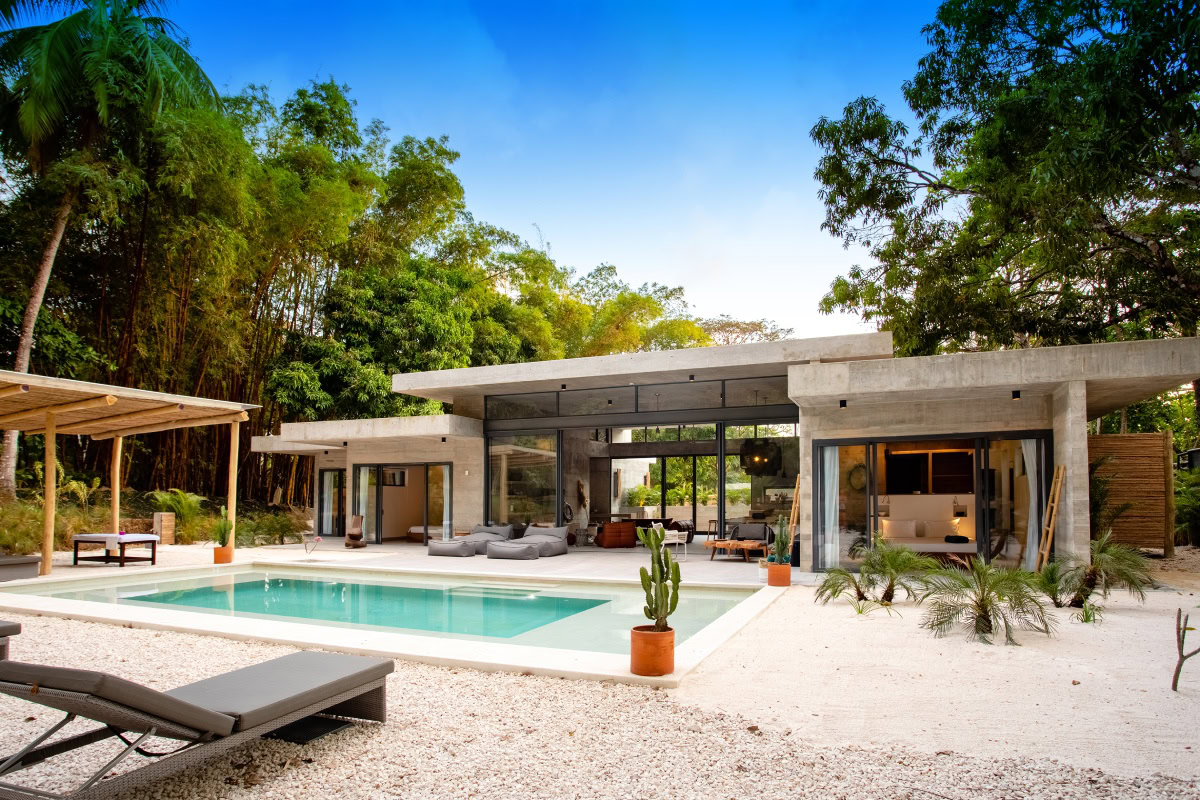
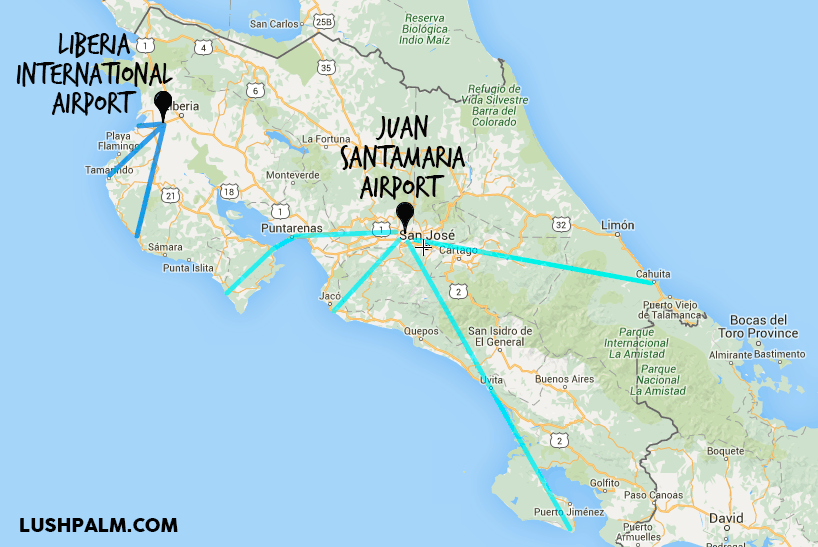
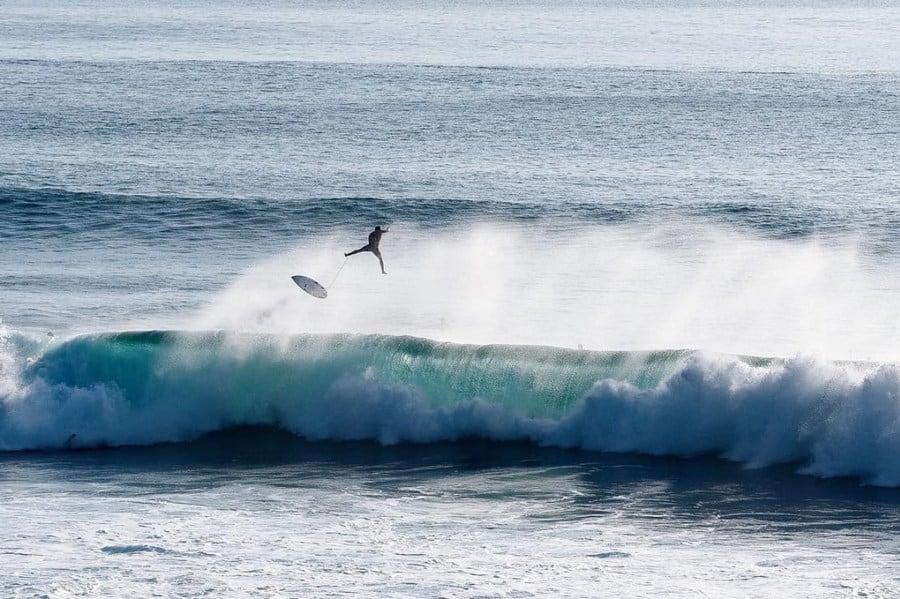

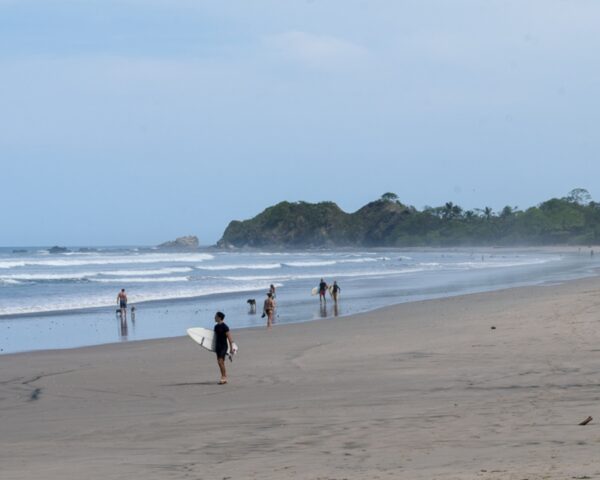


Traveling to Occidental Tamarindo, Costa Rica from Canada. Graciously, if I contact the resort, is there a way to pre book a surfboard rental? If not, is there surf shacks scattered along the beach to rent? The whole point of the trip is to surf daily. Lastly, with skateboarding knowledge of 30 plus years – moving down surf board sizes will occur. If renting fir a week – can you swap board sizes daily if boards are available? I’d hate to rent a board fir the week – locked in to one size.
There are plenty of surf shops in Tamarindo, and I’d say some would be willing to rent you a board with the ability to swap it out during your stay.
Hello!!!
GREAT INFORMATION.
I AM PLANNING ON COMING FOR A VISIT AND TAKING SURF LESSONS.
I HAVE BEEN BOOGIE BOARDING FOR SEVERAL YEARS AND LOVE WATCHING THE SURFING AND BIG WAVES!
I CANT DECIDE WHERE TO STAY OR WHO TO TAKE LESSONS FROM OR WHAT MONTH TO COME! LOL.
WILL HAVE TO WAIT UNTIL NEXT DRY SEASON.
WOULD SANTA TERESA BE A GOOD CHOICE FOR A BEGINNING SURFER?
and We want to stay about two weeks SO
Would have to move after the week of surf lessons.
Can you make any recommendations?
Thank you very much!!
I DONT WANT TO RUN INTO SOMEONE IN THE WATER!
WOULD LIKE TO STAY AT MAYBE 2 BEACHES!?? WHAT IS THE BEST?
AND WITH SOME ROOM.
THANK YOU!
PENNY
IM ALSO THINKING ABOUT RELOCATING
THERE IF I LIKE IT!!! I NEED TO BE IN THE
WATER MORE FOR MY HEALTH!!!
Hi Penny, thanks for stopping by and for your comments. We’ll get in touch via email and will be happy to help you with planning and booking your trip if interested. Chat soon, thanks!
planning a trip in JUNE- we have only surfed SC east coast, so wanting better waves but nothing too crazy.. thinking Tamarindo or Santa Teresa..but want to be close to see sloths, monkeys, volcanos—other places without driving too far. Best idea for this? Two adults and two teenagers. Thanks!
We’ll send you some options! Tamarindo or ST could work, we’ll share the details via email. Cheers
Hello There:
Dengue Fever is an issue during rainy season? Give me the scoop and
please do not sugar coat it.
No motorbikes to rent?
Appreciate the reply. Doing some research on a much needed trip after
missing two seasons in Bali bc of Covid.
You are missing DOMINICAL beach which is just epic, less crowded, amazing waves, and a beautiful lay-back vibe! Definitely my favorite spot in Costa Rica!
Thanks for sharing! There are so many great spots all over Costa Rica.
I would be so stoked to have a plate of gallo pinto like that right now. I haven’t been to Costa Rica in 15 years and it feels like it might be time to plan a little trip. The Guanacaste Penninsula is beautiful but I would like to score Pavones and check out the Oso Penninsula. Pura Vida!
Bring on the gallo pinto! Yes, there are so many awesome areas in Costa Rica to explore and surf, you could spend a looong wonderful time getting to know them. Pura Vida
Very comprehensive and detailed guide, please kep up the good work!
I am using the info here to plan my visit to Costa Rica in April/May 2020. Would you please help me with the follwing doubts I still have?
1-Would I be able to buy a cheap board there and then sell it at the end of my stay?
2-Wave wise, where would you go/stay longer if you want to ride longboards on long/full/fat waves with consitent days of swell?
3-If yoga is your second hobby after surfing, where would you say is the Costa Rica yogi mecca?
Thanks in advance, MAA
Hi Marcos, you would probably be best off staying in the Nosara or Santa Teresa areas. Both areas have thriving yogi scenes and a variety of consistent and fun waves suitable for longboarding. I’m not sure about the buying and selling of a surfboard locally, but I’d think you’d be able to pull that off.
Hi Eric is October an okay season for surf in Santa Teresa? I am a beginner surfer.
Hi Jen, October can bring bigger swells and good conditions for more advanced surfers in Costa Rica. However, it is the peak monsoon season, so rain is to be expected. If you’re able to go after mid-Nov, that would be ideal as a beginner.
We are planning a trip to Costa Rica in the next month and it is great to read about getting in earlier in the rainy season to try to avoid entire days of rain. Thanks for sharing !
Our pleasure! Hope you have an awesome trip! x
Hi, I’m flying to Costa rica in August and I would really appreciate some help regarding budgets and routes for a whole month
Thank you
I find it a little bit disconcerting that your site is still promoting Nature Air. They have been forced out of business since January 2018 due to to many fatalities from to their airplane crashes in one year. Come on guys, get with the program, and update your info once every year or so. I am a Mal Pais kind of guy. Been going to CR for years and years. Sansa airlines is your best bet for puddle jumping CR
Hey Scott, thanks for visiting our site and for bringing us up to speed about Nature Air. We really appreciate your input and have made some revisions to the article. Unfortunately, we are just a small team doing the best we can to provide helpful information while keeping everything up to date, so sometimes things might slip through the cracks as with this. But one of the great things about our community is we have awesome people like yourself who are willing to share and can help fill in the gaps when things have changed or we missed something. Hope you enjoy our content and thanks again for stopping by. Cheers
Costa Rica looks beautiful! Thanks for sharing the great photos and suggestions on accommodation, dining and much more! 🙂 There certainly is a nice choice for hotels to suit most everyone’s budget.